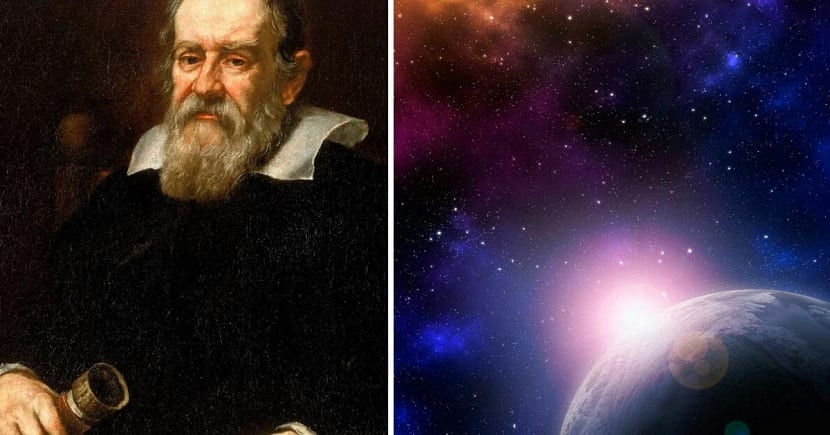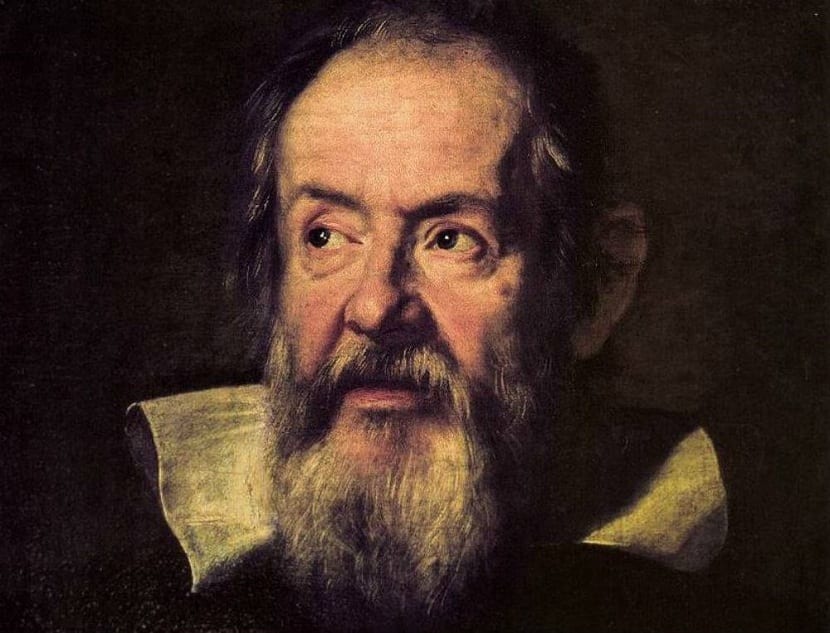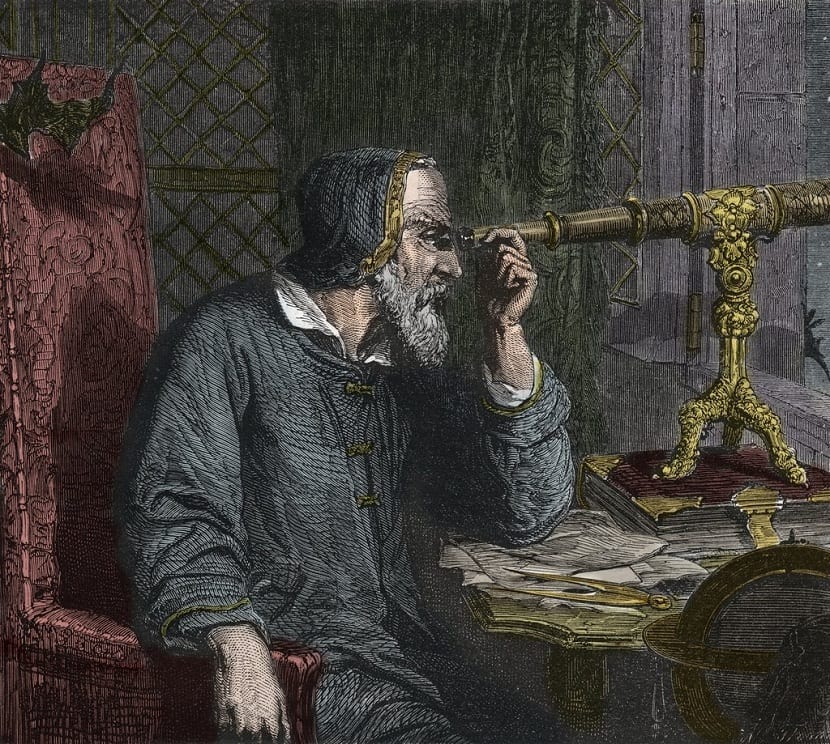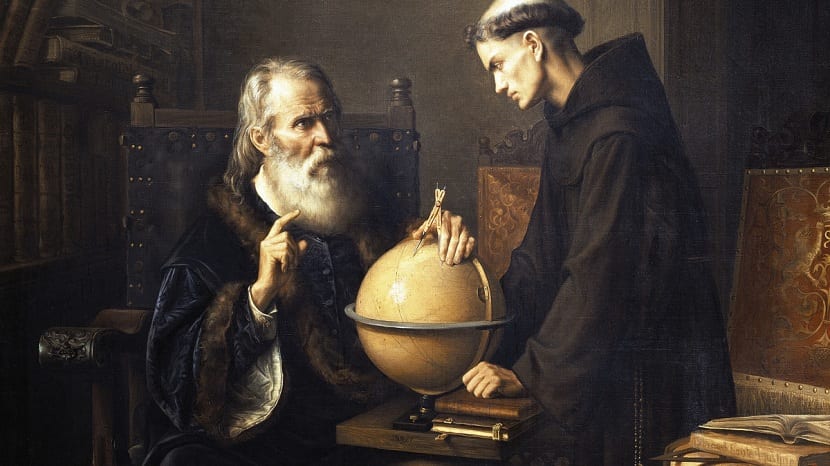
The world of physics and astronomy there have been numerous theories that have been ruling the moment. First, to explain how the universe works, they told us that the Earth was the center of the universe in the geocentric theory. Later, thanks to Nicolaus Copernicus, and his heliocentric theory, it was known that the Sun was the center of the Solar system. After the revolution of heliocentrism, the father of modern science was considered Galileo Galilei. It is about an Italian scientist who formulated the first laws of motion. He brought great advances to the world of astronomy as we will see in this post.
Do you want to know more about Galileo Galilei? Here we tell you everything.
Biography

Galileo Galilei was born in Pisa in 1564. Through some letters, we can find out about his mother. The father, Vincenzo Galili, was a Florentine and came from a family that had long been illustrious. He was a musician by vocation, although economic difficulties forced him to dedicate himself to commerce. From his father, Galileo inherited a taste for music and his independent character. Thanks to this combative spirit, it was possible to advance in the world of research.
In 1581 he began to study at the University of Pisa, where he was able to enroll in the world of medicine. After 4 years there, he left it without obtaining any title, although knowing much about Aristotle. Although he did not get a degree, he started in the world of mathematics. He dedicated some years of his life dedicated to mathematics and also interested in everything that was philosophy and literature. After giving experimental classes in Florence and Siena, he tried to have a job at the University of Bologna, Padua and in Florence itself.
It was already in Pisa that Galileo composed a text on movement and criticized Aristotle's explanations about falling bodies and the movement of projectiles. And it is that Aristotle, Two thousand years earlier, he had claimed that heavier bodies fell faster. Galileo proved this to be false by simultaneously dropping two bodies with different weights from the top of the tower. They were able to contrast that they hit the ground at the same time.
He focused on observing facts and subjecting them to conditions he could control and conducting measurable experiments.
First telescope

With the death of his father in 1591, Galileo was forced to take responsibility for his family. Because of this, some economic difficulties began that worsened over the years. In 1602 he was able to resume the studies he began on the movement and he began with the isochronism of the pendulum and its displacement along an inclined plane. With these studies he tried to affirm what the law of the fall of the bass was. In 1609 he developed all his ideas that served to publish his work called » Speeches and mathematical demonstrations around two new sciences (1638) ».
In that same year he went to Venice to request a salary increase and had the news of the existence of a new optical instrument that was used to observe from afar. It is then that Galileo Galilei dedicated years of effort to improve and make it the first telescope.
He then became the man who made an instrument that has been and is of great scientific benefit and to know everything we have outside the planet. In 1610 the first observations of the Moon were made. He interpreted that what he was seeing was accurate proof of the existence of mountains on our satellite.
When discovering 4 satellites of Jupiter, he was able to know that the Earth was not the center of all movements. In addition, he was able to observe that Venus had some phases similar to that of the moon. This is how the heliocentric system of Copernicus was corroborated. Galileo wrote a text at full speed since he wanted to make known all his discoveries. It was not long before he was recognized for his work The Sidereal Messenger. Johannes Kepler I distrusted him at first. However, later he was able to see all the advantages that came from using the telescope.
Astronomical discoveries

He issued numerous letters in which he gave unequivocal evidence of the entire general structure of the firmament. He also stated that all these tests are those that were granted to Copernicus the ability to reject the Ptolemy geocentric system. At this time, unfortunately, these ideas interested the inquisitors. However, they argued for a contrary solution and began to suspect that Copernicus was a heretic.
The last stage of Galileo Galilei's life began when he settled in Florence in 1610. In these years, a book had already been published about sun spots that were discovered by the German Jesuit Christof Scheiner. Galileo had already observed these sunspots before and showed them to some important people when he was in Rome. This trip he made to Rome helped him a lot as he became a member of the Accademia dei Lincei. This society was the first dedicated to science that lasted in time.
In 1613 the astronomical research on the History and demonstrations about sunspots and their accidents, where Galileo came up against Scheiner's interpretation. The German Jesuit thought that the spots were an extrasolar effect. The text started a great controversy about who was the first to discover sunspots. This made the Jesuit became one of the fiercest enemies of Galileo Galilei in the field of science and research.
Of course, all this reached the ears of the inquisition. Galileo was called in Rome to answer to some accusations. The astronomer was picked up in the city with great shows of respect and, as the debate over his accusations progressed, the inquisitors would not bend their arm or willingly follow the good arguments he was leaving.
In 1616 he received the admonition not to teach the theories of Copernicus publicly. Finally, at the age of 70, Galileo was already a wise man and He died at dawn on January 9, 1642.
I hope that the biography of Galileo Galilei helps you to know more about the scientists who revolutionized astronomy.